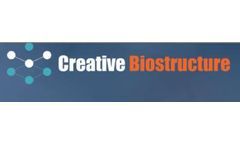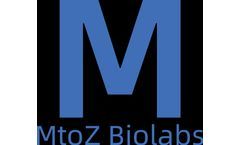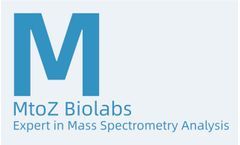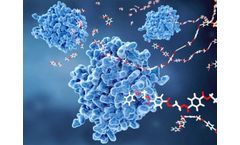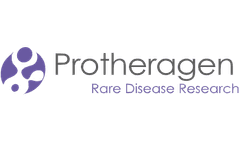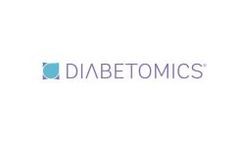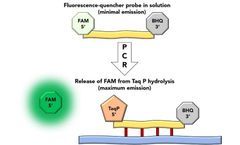Refine by
Disease Detection Articles & Analysis
29 articles found
As the new year begins, many people prioritize their health by scheduling annual physicals and medical check-ups. While these routine exams ensure overall well-being, few realize the crucial role that fluoropolymers play in modern medical technology. From diagnostic tools to life-saving devices, fluoropolymer materials contribute significantly to patient safety, hygiene, and the accuracy of ...
This approach is especially beneficial for investigating diseases with immune dysregulation, such as cancer, autoimmune disorders, or infectious diseases, where multiple cytokines orchestrate pathological processes. ...
As a result, lipidomic profiling of exosomes holds potential as a diagnostic tool for detecting cancer and monitoring treatment response. Moreover, lipidomic shifts can also reveal insights into metabolic conditions such as obesity, diabetes, and neurodegenerative diseases. ...
Acetylation is a common post-translational modification of proteins, typically occurring on lysine residues of proteins, and plays a crucial role in regulating protein function, cell signaling, gene expression, and disease onset. For instance, the acetylation state of histones directly influences chromatin structure and the regulation of gene expression.Acetylation ...
Here are some key points about histone SUMOylation: 1. SUMOylation and Diseases Abnormal SUMOylation is associated with various diseases, including cancer, neurodegenerative diseases and cardiovascular diseases. Therefore, studying the SUMOylation of histones is crucial for understanding the molecular mechanisms of these ...
Beyond the kitchen, enzymes play a pivotal role in healthcare, enabling early disease detection and personalized treatments. Diagnostic enzymes empower healthcare professionals to pinpoint ailments accurately, while therapeutic enzymes serve as the architects of novel drugs, revolutionizing medical treatments. ...
Rare diseases, also known as orphan diseases, affect a small percentage of the population, making them particularly challenging to diagnose and treat. ...
However, recent advancements in diagnostics technology hold promise for speeding up the field of rare disease therapies. Rare disease diagnosis can often be a complex and time-consuming process. ...
The accurate and timely diagnosis of preeclampsia is critical in management of affected pregnancies to reduce maternal and fetal/neonatal morbidity and mortality, yet difficulties remain in establishing the rigorous diagnosis of preeclampsia based on clinical parameters alone. Biomarkers that detect biochemical disease have been proposed as complements or ...
This makes them ideal for detecting diseases at their earliest stages, when they are most treatable. ...
With Luminex xMAP technology, various cytokines such as interleukin, interferon, tumor necrosis factor, colony-stimulating factor, chemokine, and growth factor can be detected. · Disease marker analysis Disease marker assays are important in the direction of basic research, early diagnosis, efficacy detection and ...
The application of existing WGS technologies to rare disease cases has proven to be useful in identifying the cause of disease by detecting multiple and comprehensive mutations at the whole-genome level, providing invaluable insights into the underlying molecular mechanisms of various rare diseases and opening up new ...
Precision-engineered enzymes enable the design of ultra-sensitive diagnostic assays that detect trace amounts of disease markers, revolutionizing early disease detection. ...
In recent years, enzymes have been widely used in disease diagnosis, providing a quick and accurate way to detect and monitor diseases. ...
These tests are highly sensitive and can detect even small amounts of enzymes, which can be indicative of a disease or condition. ...
To this end, several diagnostic methods have been designed and tested, and one USA FDA approved test kit utilises fluorescence based reverse transcript real-time polymerase chain reaction (rRT-PCR) technique. The rRT-PCR test works by detecting replicated nucleic acid copies from the SARS-CoV-2 virus through a bound fluorescence probe that is released from its quencher ...
We assessed the feasibility and reliability of pulse oximetry plus clinical assessment for detection of major congenital heart disease, especially critical congenital heart disease, in China. ...
Bynum: As with most conditions, early detection of AMD is preferred because, when we can detect disease early, we have an opportunity to make adjustments in the hopes of changing course. ...
Pediatric Short Bowel Syndrome (also called SBS or Short Gut Syndrome) generally develops shortly after birth due to an underlying gastrointestinal (GI) condition. The condition then can lead to intestinal surgery, in which part of the short bowel is removed. SBS is a devastating condition where patients struggle to absorb life-sustaining nutrients from their diet due to the surgical removal of ...
Importance of posturography Several conditions like stroke, Parkinson’s disease, multiple sclerosis, cerebral palsy, vestibular dysfunctions, knee and foot lesions, traumatic brain injury, among many others will affect balance. ...



